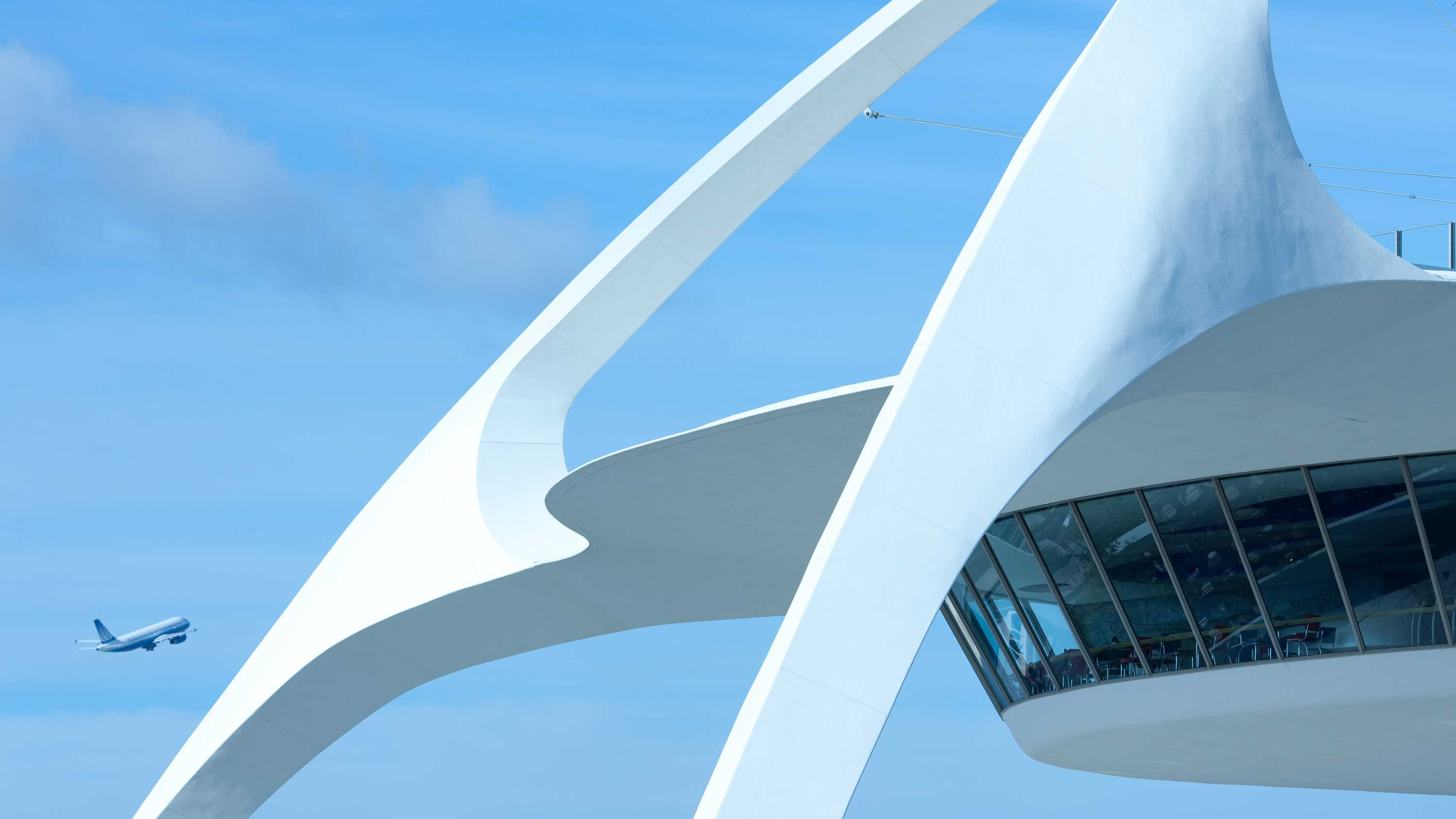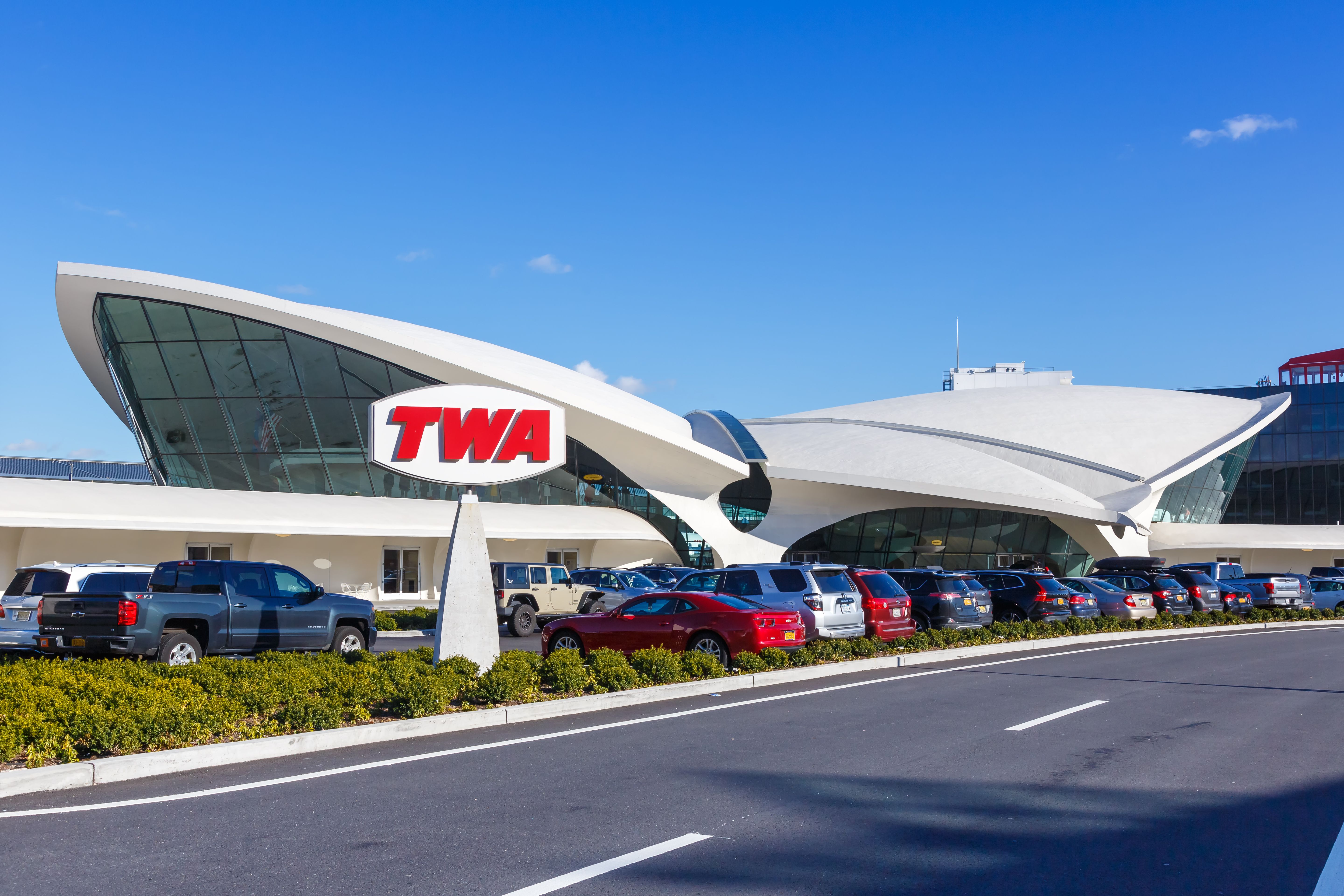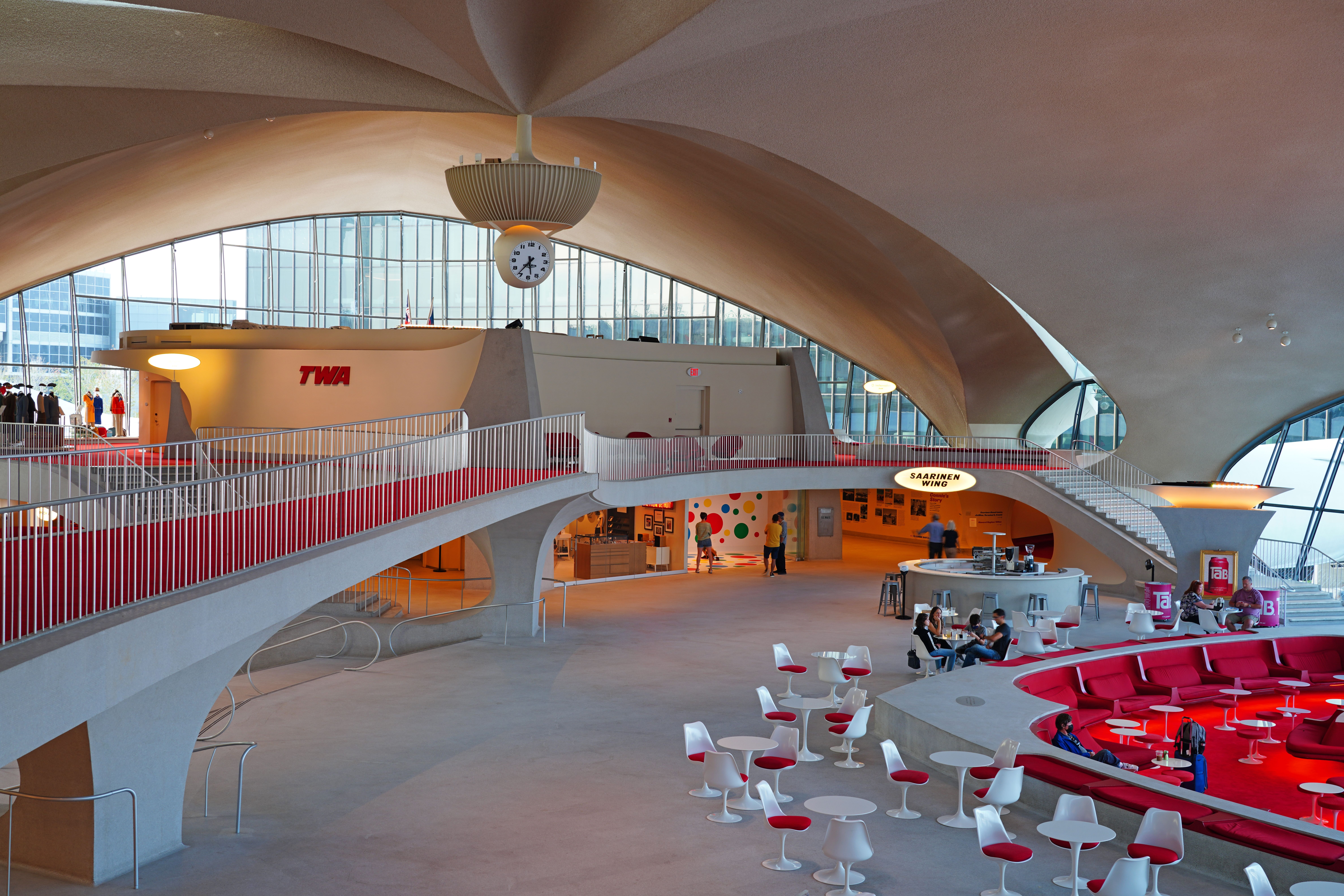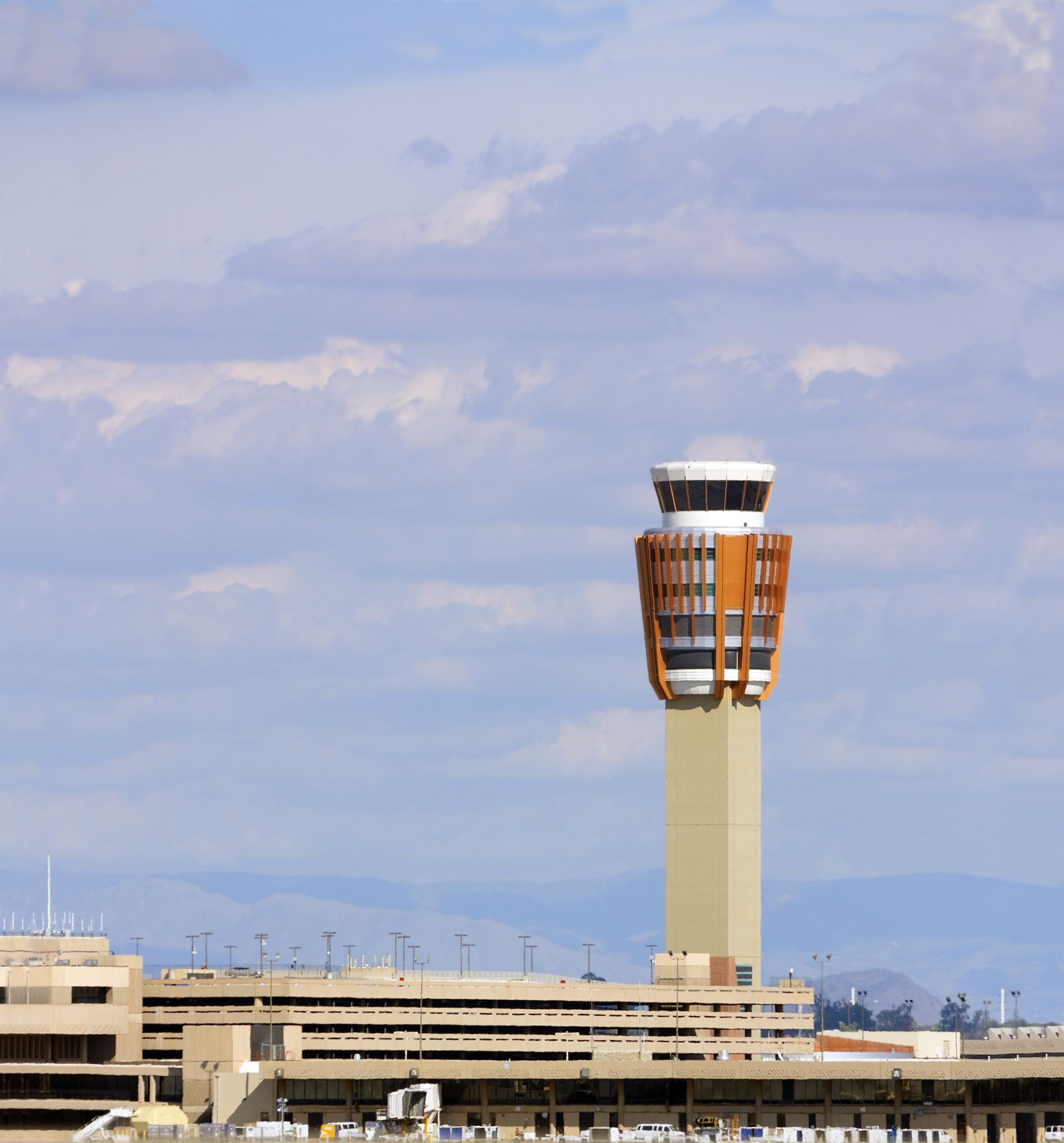Summary
- Some airports feature iconic landmarks that showcase the history and significance of air travel across the nation.
- Historical structures like the TWA Hotel at JFK and the Theme Building at LAX have been around for decades.
- Towers in Phoenix and San Francisco are architectural marvels that serve essential functions in air traffic control.
As airports around the country handle millions of passengers each year, some facilities have undoubtedly made a name for themselves. From unique architecture or being an iconic filming location to historical buildings and eye-catching air traffic control (ATC) towers, there are several airport landmarks that the public has come to love over the past several decades. While airports may not hold a special place in the hearts of some, many frequent flyers and aviation enthusiasts may revel that their home airport is known for having an iconic landmark. These structures, whether defunct or operational, unreservedly tell the story of the significance of air travel across the nation.
Although some landmarks are not open to the public as they are essential to ensuring safe and secure operations at airports, others are leisure places where travelers can spend a night or two. In fact, some of these facilities are so recognizable that onlookers can determine their location and the airport by just viewing the landmark itself. Passengers have noticed some of these structures for more than 60 years, while others are newer facilities that have become favorites for many. Five of these landmarks can be found at the hubs of the big three US airlines in Los Angeles, New York, Chicago, Phoenix, and San Francisco.
Los Angeles International Airport Theme Building
Built in 1961
Perhaps the most iconic structure is the Theme Building at Los Angeles International Airport (LAX). Many people know that the airport is home to the sphinx-like building but may not know the history behind it. The eye-catching landmark, located at the very center of the airport, is straight out of a 50s Poverty Row sci-fi, according to Architecture Today. Constructed in 1961, the structure has always been known as the Theme Building. However, the exact meaning of what the ‘theme’ is meant to be has never been properly explained. It was designed by a group of architects that championed Southern California modernism – the firm of Luckman & Pereira, Welton Becket & Associates, and Paul R. Williams. Luckman & Pereira were known for developing other California classics, such as the Trans America Building in San Francisco and the Disneyland Hotel. Welton Becket & Associates created the Capitol Records Building. Williams, perhaps known as the most successful and high-profile African American architect of his generation, designed the glamorous Hollywood homes of Lucille Ball and Frank Sinatra.
Designers originally planned for a large dome to act as a central hub and connect all terminals and parking structures at LAX to accommodate large amounts of passenger traffic. However, the plans were eventually scaled down as the terminals were built further apart. In place of the dome, the Theme Building was resurrected to serve as a reminder of the original plan. In 1993, the building was recognized as a historical-cultural monument. Over the next four years, a multi-million dollar renovation took place in preparation for the opening of the Encounter Restaurant. The building was updated with a retro-futuristic interior and new lighting designed by Walt Disney Imagineering. Visitors could also take an elevator to the building’s observation deck to view aircraft landing and taking off. The restaurant closed in 2013 and had no plans to reopen. Since then, every improvement made at the landmark has been purely cosmetic.
TWA Hotel
Opened in 2019
Another historical structure lies on the other coast. In 2019, MCR and MORSE Development reignited Eero Saarinen’s iconic Trans World Airlines (TWA) Flight Center at John F. Kennedy International Airport (JFK). The building, which was constructed in 1962, operated as a terminal until it closed in 2001. More than a decade later, the facility was repurposed to be a hotel.
Photo: Markus Mainka | Shutterstock
The very center of the hotel features restaurants, bars, and retail outlets. Two new buildings, which sit behind the former flight center, were added to house 512 guest rooms with views of JFK’s aircraft movements. The Trans World Flight Center became a designated New York City landmark in 1994, and was subsequently added to the National Register of Historic Places in 2005.
Photo: EQRoy | Shutterstock
Other features of the TWA Hotel include:
- 50,000 square feet of meeting and event space
- The Paris Café and The Sunken Lounge
- A rooftop infinity pool and observation deck
- The world’s largest hotel gym: a 10,000-square-foot fitness center
- Museum exhibits of TWA and the jet age
Chicago O’Hare International Airport Terminal 3
A noticeable movie scene
While Terminal 3 at Chicago O’Hare International Airport (ORD) may not be considered a historical landmark, the facility is undoubtedly recognizable. It made its screen debut in the 1990 holiday box office hit Home Alone, as the McCallister family rushed to catch an American Airlines flight to Paris. As the family was filmed running between the K and H concourses to finally reach gate H17, some people consider the terminal to be historic.
To celebrate the film’s 30th anniversary in 2020, Senta Moses Mikan, who played Tracy McCallister, spoke to Simple Flying’s sister digital publication, CBR, about filming the hectic scene.
“There were thousands of extras, all expertly choreographed so none of us would be in danger running at full speed through the American Airlines terminal at O’Hare. And we ran at full speed. Sometimes we’d bump into each other, like a multi-car pileup on the expressway, and just crack up laughing. I can’t speak for anyone else, but as a kid, I loved it. There were so many setups and narrowly missed moments of disaster, but to my knowledge, no one got hurt. And frankly, that’s a Christmas miracle.”
Simple Flying and CBR are part of the Valnet Publishing Group.
According to Fandom, American acted as a partner and sponsor for the original home video releases of Home Alone and Home Alone 2: Lost in New York due to its product placement. Home Alone 2 was the sequel to the original film and was released in 1992.
Phoenix Sky Harbor International Airport ATC Tower
Opened in 2007
Soaring above the oftentimes hot Valley of the Sun, is the air traffic control (ATC) tower at Phoenix Sky Harbor International Airport (PHX). This tall building stands at 326 feet tall and began operations at the airport on January 14, 2007. It is the third ATC tower to command flights at PHX, but is the tallest to date, and among the tallest towers in the US.
Photo: You Touch Pix of EuToch | Shutterstock
According to ABC 15 Arizona, it serves many functions during day-to-day operations:
- Houses more than 30 air traffic controllers at the top level of the tower
- Operates 24 hours a day, seven days a week
- Up to nine controllers can manage air traffic operations and talk with pilots at any given time
- The tower cab is 19 stories above the ground and has 1,162 square feet of floor space with a 360-degree view of the airport and surrounding areas
- Just below the tower cab is the Phoenix TRACON, which stands for Terminal Radar Approach Control
PHX’s ATC tower reportedly ranks between the eighth and 12th busiest airport towers in the US.
San Francisco International Airport ATC Tower
Opened in 2016
Although the ATC tower at San Francisco International Airport (SFO) may not be as tall as PHX’s, it is newer and is recognized for its sheer design. According to the airport, the tower is 221 feet tall and features an inviting flared design clad in curved metal paneling. An LED backlit glass “waterfall” is also featured on the tower, serving as a visual landmark from the airport and the surrounding community. It is situated between Terminals 1 and 2 and replaced the former tower, which sat atop Terminal 2.
Construction on the control tower began in the summer of 2012. Three years later, the Federal Aviation Administration (FAA) installed the necessary operations equipment before it became fully operational in 2016. The tower provides an unobstructed 270-degree view of SFO’s runways and taxiways. Despite its unique and striking design, it was designed to remain operational after a seismic event of up to 8.0 in magnitude.
Which airport landmark is your favorite? Be sure to let us know by leaving a comment below.




